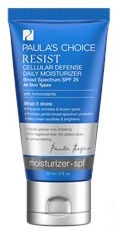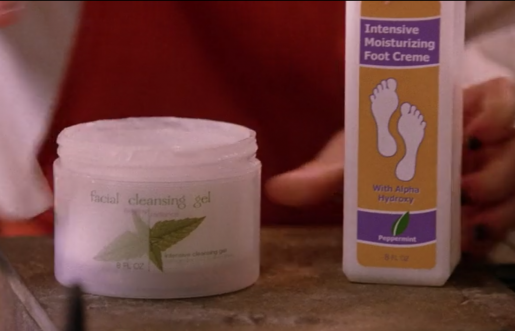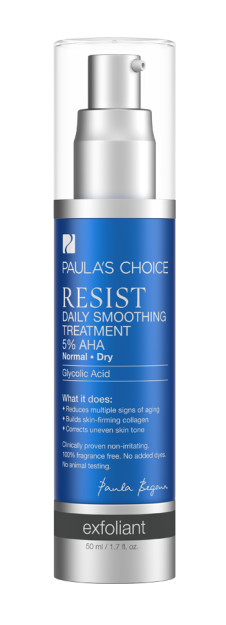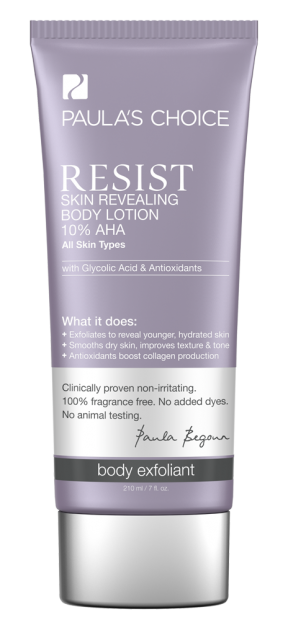My Family’s Skin Care Secret Weapon
 As promised: my epic skin care post!
As promised: my epic skin care post!
First: a quick sunscreen update: despite my previous post, I find I’m still reaching for the Paula’s Choice Resist Cellular Defense most mornings. I just like it so much more than anything else I’ve tried. I do choose the PC Skin Recovery kind if I’m going to spend a lot of time outdoors, since I feel better protected with its combination of zinc oxide and titanium dioxide. And I tested (on my arms only, not face) samples of the Biore Watery Essence and Biore Watery Gel I talked about in that post. Honestly, I can’t tell much difference between them. They both have a pleasant citrusy scent which fades quickly after application. They offer excellent UVA and UVB protection, but they do contain quite a bit of alcohol and that tends to dry me out. Plus they’re chemical sunscreens, not physical. I guess the bottom line is, they don’t check enough of my boxes. I can see keeping them around for arms and legs, though.
Other people gave lots of good recommendations in the comments of last month’s post, so if you’re hunting, check them out.
***
I’ve learned a lot about skin care in the past few months. Several members of my family suffer from an extreme dry skin condition. It isn’t eczema; it isn’t psoriasis; it’s a diagnosed condition with a long name, and what it means is: their skin doesn’t produce enough oil and is seriously, even painfully dry. Many doctors have recommended treatments over the years. Nothing worked. Neither did natural remedies such as coconut oil. If you’re tempted to suggest it, odds are that we tried it. It has been a long and frustrating journey.
But suddenly, things have changed. Like: massively changed. What happened is: during my sunscreen research, I got sucked into the fascinating world of Asian Beauty forums, and I. have. learned. so. much. While Western cosmetic science focuses on makeup, Korea and Japan tend to put their research funding toward skin. Conventional wisdom says Korean skin science is about ten years ahead of American.
As a result of my skin-science reading binge, the most game-changing element for me was the realization that the various products our pediatricians have recommended over the years might have worked if we’d known to layer them. Frankly, I’m a little frustrated with the dermatology department at our local children’s hospital. One year: “Use this!” The next appointment: “Hmm, okay try this instead.” “Still no better? Honestly, we’re stumped.” (That is a paraphrase but just barely.)
I’ll skip the narrative and cut to the point: I realized that we needed not one treatment but a variety of them, in layers, used consistently.
- A gentle chemical exfoliant to remove dead skin cells;
- A humectant to hydrate the skin (and this is where our newly embraced secret weapon comes in; see below);
- A moisturizer containing lipids and ceramides to restore oil to the skin (just as Step 2 restores water); and
- An emollient to seal in all this nourishing oil and water (when weather permits).
If you’re at all familiar with the Korean approach to skin care, you know that layering is a key aspect: combining different products that do different jobs. This can involve many, many steps (and products), or just a few. The basic elements are: cleansing; actives (such as the chemical exfoliants I mentioned in our Step 1; more on that in a minute); toners and essences; serums and ampoules; moisturizers; sunscreen. For a more thorough explanation, see this post by Tracy of Fanserviced-B. What I’m talking about in this post is a subset of the above—you’ll note that the Very Important cleansing and sunscreen steps are not included in my little list up there.
My steps 1-4 up there refer specifically to treating my kids’ super-dry arms and legs. Their skin needs oil, and it needs water. For years, we have tried doggedly to make that happen from within, through diet—and, as I said, from without, via the treatments our doctors have recommended over the years. But trust me when I say that nothing made much difference. Dry, prickly, bumpy skin that stung in hot weather.
But now, just as summer rolls in (note: I started this post a month ago!), it’s gone. It’s healing. It’s comfortable skin. I’m overjoyed for them.
Step 1. Exfoliate.
Physical exfoliants are things like scrubs and pastes. The gritty elements may be sugar, salt, microbeads (ugh), or ground up husks of various sorts. Most scrubs are too harsh for my kids’ delicate skin (and too harsh for your face too, so be cautious). However, a gentle sugar scrub can be useful if you have a lot of hard, dead skin to slough off. You can make one with olive or coconut oil and sugar. (Some people find coconut oil irritates their skin, so patch test your recipes.)
Chemical exfoliants use gentle acids such as lactic acid and glycolic acid (AHAs) or salicylic acid (BHA) to break down and remove dead skin. Many facial products contain these alpha hydroxy acids or beta hydroxy acids as well. For example, the well known Stridex pads in the red box contain BHA. Your favorite foot cream may well contain an AHA.
(I rewatched Mean Girls recently and got a big laugh out of the scene when Cady and Janice spike evil Regina’s face cream with foot lotion. Their secret plan to wreck her complexion comes to naught—possibly because the AHA in that foot lotion would actually be great for Regina’s face.)


(Peppermint, though. Not great on the face.)
 For years (on and off), I have used a 5% AHA treatment from Paula’s Choice for exfoliating my face. I love this product. Quite gentle but very effective. I find that every-other-day usage is the right amount for my skin; more than that and I start to show the telltale signs of overexfoliation: red, tight, shiny skin (for me it’s always right beside my nose). I learned quickly to pace it correctly. Other people have good effects with daily usage and even stronger percentages of AHA.
For years (on and off), I have used a 5% AHA treatment from Paula’s Choice for exfoliating my face. I love this product. Quite gentle but very effective. I find that every-other-day usage is the right amount for my skin; more than that and I start to show the telltale signs of overexfoliation: red, tight, shiny skin (for me it’s always right beside my nose). I learned quickly to pace it correctly. Other people have good effects with daily usage and even stronger percentages of AHA.
*Note on Paula’s Choice links: these are not affiliate links, but if you are a first-time customer, you can use my Refer-a-Friend code and both of us will get a $10 reward coupon. Amazon links in this post are affiliate links.
Another reason the Mean Girls foot lotion made me smile was because a certain brand of foot lotion was one of the products urged upon us by a dermatologist some years back. If that doctor had encouraged us to follow it with the darn-near miracle product coming in Step 2, and then to follow that with a good moisturizer, we might have gotten somewhere. But nope. But that foot lotion did contain an AHA which helped with exfoliation.
Another oft-recommended treatment was Amlactin. As the name suggests, it contains lactic acid—one of the gentlest AHAs. The kids always said it stung and they dreaded having to put it on. Again, I now believe that was due in part to its being used solo. Steps 2-4 would have helped enormously.
For my kids’ dry skin, what I’m using now for Step 1 is (on alternate nights):
Paula’s Choice Resist 10% AHA Body Lotion
Cerave Skin Renewing Lotion with BHA
Eventually we will cut this down to a single exfoliant product, probably the Cerave because it’s more affordable and I love the formulation. Lots of ceramides to repair the skin barrier. Also, the Paula’s Choice AHA smells a wee bit vinegary. (Common for AHA products. The 5% face stuff above smells more like citrus than vinegar to me and I don’t mind it at all.)
Step 2: Hydrate.
(Cue trumpets, because this is the product that deserves some serious fanfare.)
Hada Labo Rohto Gokujyun Hyaluronic Acid Lotion.
Hyaluronic acid is the bomb, you guys. You’ll find it in a number of creams and lotions, and Paula’s Choice even sells it as a booster serum that you can add to your favorite product.
The Asian beauty forums are filled with paeans to the Hada Labo lotion, and for good reason. This is an affordable product ($12 on Amazon Prime) that hydrates like nothing I’ve ever seen. A little goes a long way, so a bottle lasts a long time. The consistency is not what Americans typically consider lotion—it’s thin and slippery, like a really really watery serum. Sort of. I squeeze a few drops, no more, into my hand and it slides on like water. Delicious. It leaves your skin feeling a tiny bit sticky at first and then soaks in, leaving you nice and smooth.
My kids’ dry skin LOVES this stuff. We now have bottles in each bathroom and apply it immediately after showers. And again at night after the exfoliating lotions, before moisturizing.
Game. Changer.
(Worth noting: there is a “Premium” version of this lotion which is supposed to be even more hydrating. We haven’t tried it yet. Hada Labo also sells a “Shirojyun” lotion which contains arbutin for brightening—which is often described as “whitening” (ugh) on Korean skin care products (although it’s about improving skin tone, not bleaching skin—perish the thought). Arbutin freaks me out, so if you’re wanting the hydrating product, be sure to look for Gokujyun, not Shirojyun.)
(Another note: I like to use a couple drops of Hada Labo Gokujyun Lotion on my face in the morning mixed with two drops of Vitamin C booster as a nourishing serum to follow my hydrating toner—but that takes us into my personal skin care routine, which is a WHOLE OTHER SUBJECT. A subject with layers. Many layers. And weird stuff like snail mucin (I know, I know) and propolis. Not to mention sheet masks. I do love me some skin care!)
Step 3: Moisturize.
This step is all about lipids and rich, nourishing ingredients. And I mean, this is the step I’ve excelled at, all these years. Hail to the rich, thick moisturizer! Aveeno oatmeal lotion was recommended to us early on, and it is excellent stuff; it was our family staple for many years. It just wasn’t enough alone.
What we like these days is Cerave-in-the-tub (or “Tubby,” as my children are wont to call it). As you can see on the label, it contains ceramides and—ding ding ding!—hyaluronic acid. It is gorgeously rich and creamy. It looks like something you’d like a dollop of on your bowl of strawberries. It soaks in quickly and doesn’t leave a film. I now use the Hada Labo Lotion / Cerave-in-the-tub combo myself every morning.
Cerave sells a thinner, pump-lotion version of this product as well, which some people prefer because sticking fingers into a tub can be unsanitary. Other folks use a cosmetic spatula instead of dipping fingers. I’ll admit that we are not that fastidious here. We just make sure to wash our hands before dipping in. (You can also find the tub with a pump on it, but I haven’t tried that.)
Step 4: Seal in all the goodness.
Emollients are thicker products made to form a kind of seal or barrier on the skin, keeping moisture in. The most common emollient is probably petroleum jelly. Aquaphor and Eucerin sell popular emollient moisturizers. And there’s Vaseline, of course. But all these products can leave you feeling greasy. We have found the Cerave Healing Ointment to be less greasy—at least until our weather really warmed up. The kids have to skip that step now. It’s a lot less necessary, now that their moisture barrier has healed and their skin is—I can hardly believe it—truly healthy.
These four steps got us to a comfortable place. I think they can cut back on the exfoliants now, going to a few times a week. Steps 2 and 3 are the long-term workhorses. We’ll resume Step 4 when the weather turns again, as needed.
Doctors are great, seriously
Modern medicine has saved the lives of more than one of my children. I don’t mean to drag on doctors, not at all. But I’ve been navigating the system for twenty years now, and, well, sometimes I’ve had to find solutions outside it. If all the different treatments recommended by my kids’ dermatologists over the years had been bundled together (along with a bottle of Hada Labo), we’d have arrived at the Land of Happy Skin much, much sooner. I’m just glad we’re there now.
Related: my ongoing sunscreen saga






